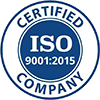Precision CNC Machining Wi Aerospace Companies Trust
Created at : Dec 6, 2022
CNC machining WI aerospace companies trust is a manufacturing process that involves the use of computers to control the movement of machine tools such as lathes, mills, and routers. This technology has enabled manufacturers to create highly accurate and repeatable parts with incredibly intricate details. CNC machined components are typically used in applications where tight tolerances and high precision are key factors. Common products include aerospace parts, medical devices, automobile components, industrial machinery, and consumer goods. To create these components,
A Subtractive Manufacturing Process
CNC machines require a CAD (Computer-Aided Design) drawing or model. The software program reads this model and translates it into instructions for the machine tool by sending signals along its axes (X, Y & Z). These commands tell the tool how to move and shape the material. CNC machining WI aerospace companies trust is a subtractive manufacturing process, meaning that it removes material from a solid block of raw material known as the workpiece. The type of cutting tool used in this process determines its accuracy and repeatability. It also determines what materials can be cut and shaped. Examples include wood, plastic, metal alloys such as aluminum, copper, brass & steel, composites and foams.
Calibrated on a Regular Basis
The accuracy of CNC parts is determined by the rigidity of the machine itself as well as the quality of the tools being used. As such, machines must be calibrated on a regular basis in order to maintain optimal performance. In addition, CNC machinists are highly skilled in their ability to interpret and understand the instructions sent to the machine. This allows them to produce parts with incredible accuracy, precision and repeatability.
A Level of Precision Previously Unattainable
CNC style machining has revolutionized modern manufacturing, but it is important to remember that it is only one part of a larger process. After machining is complete, parts typically need to be post-processed in order to meet tight tolerances or aesthetic requirements. This may include deburring, polishing, sandblasting, coating or painting. Overall, CNC machining has enabled manufacturers to create high quality and complex parts with a level of precision previously unattainable. It has also made mass production more cost effective than ever before. Contact Hinz Corp today to learn more.
